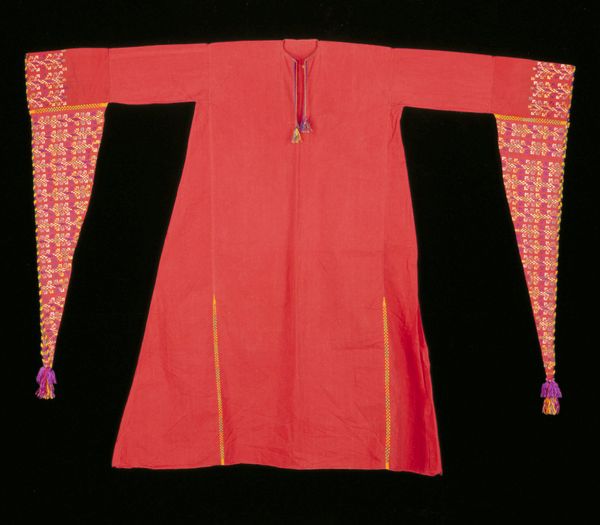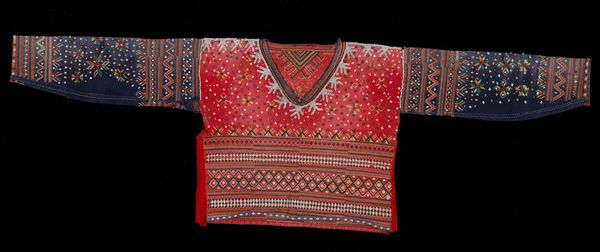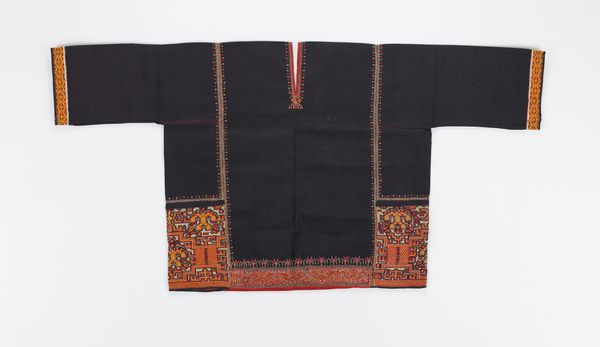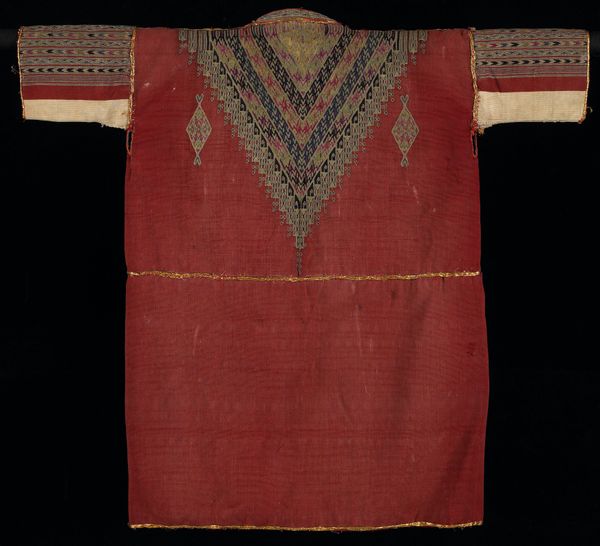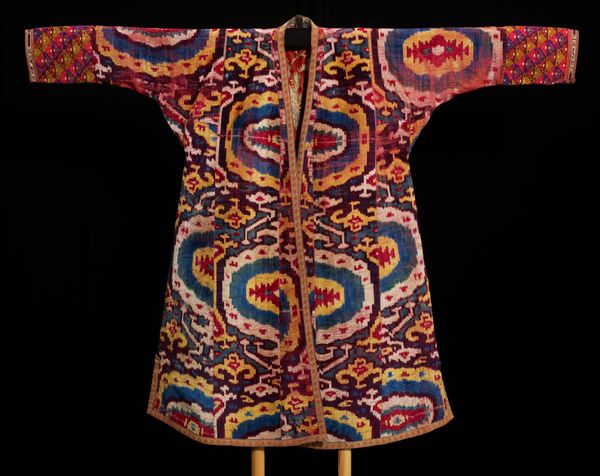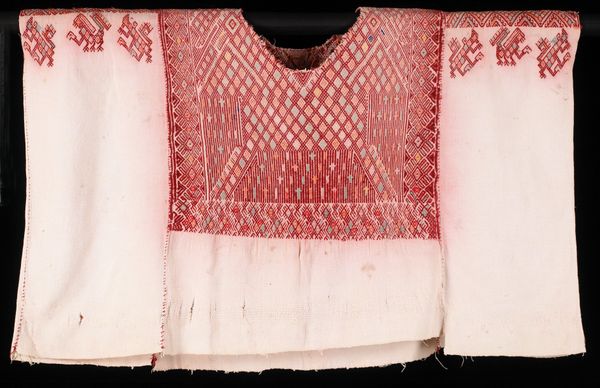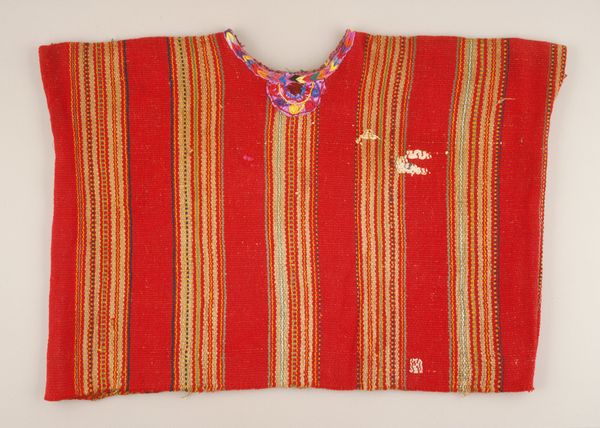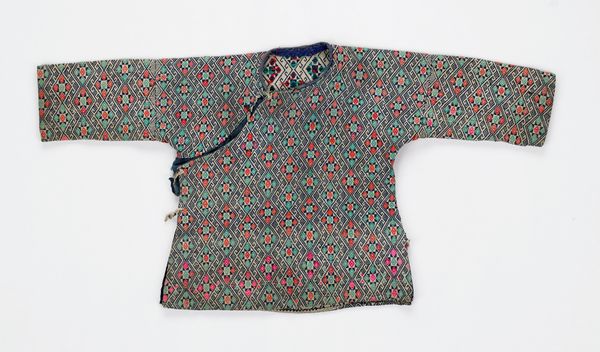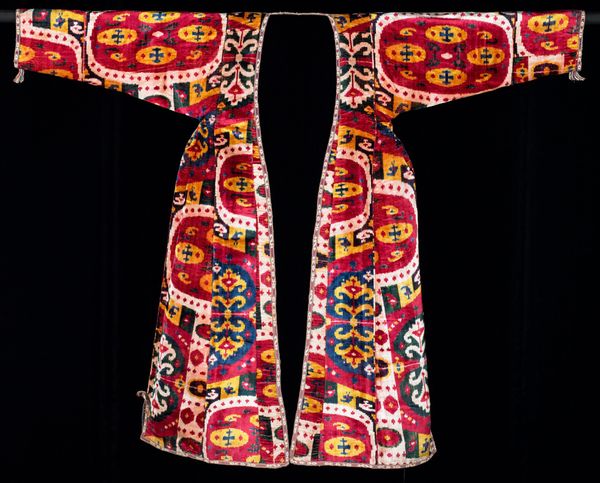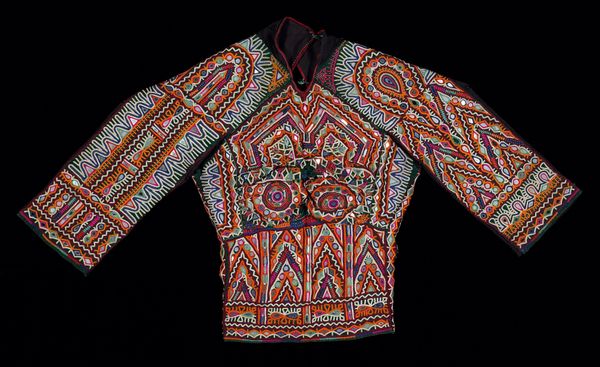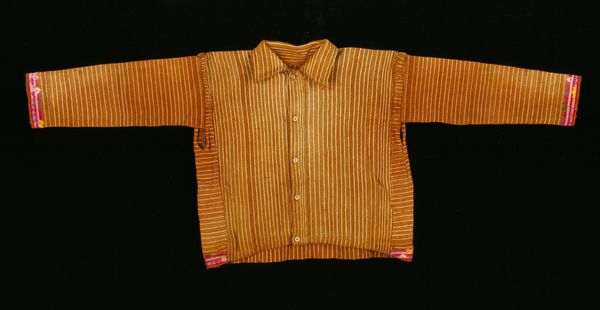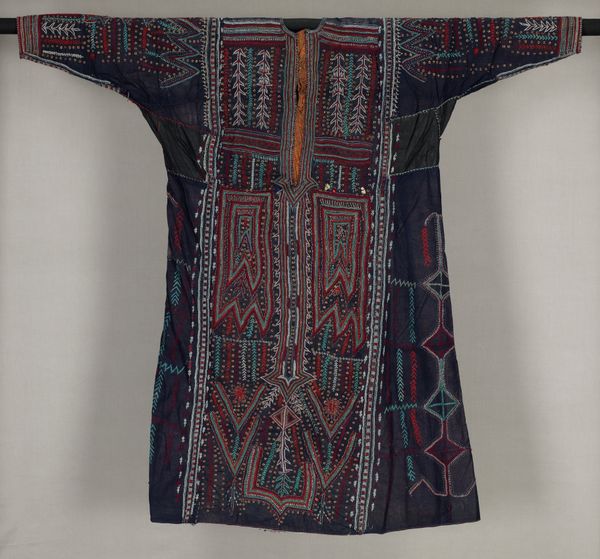
fibre-art, textile, cotton
#
pattern-and-decoration
#
fibre-art
#
textile
#
geometric pattern
#
cotton
#
textile design
Dimensions: 37 7/16 x 50 1/8 in. (95.09 x 127.32 cm)
Copyright: Public Domain
Curator: The "Shirt," likely made in the early to mid-20th century, intrigues me most through its materials and the processes implied in its construction. Editor: Yes, this piece really struck me with its bright colors and the repetitive patterns. It's attributed to an anonymous creator and made with silk and cotton, according to the museum records. What can you tell me about it? Curator: Well, first let's consider the anonymous maker. Anonymity, in the context of textile production, often points to collaborative or domestic labor. How do the materials, the cotton and silk, complicate that understanding of labor? Editor: That's interesting. Silk, I suppose, implies some access to luxury or trade networks, while cotton might suggest wider accessibility and perhaps a different type of labor? Curator: Exactly. And look at the stitching! The geometric pattern – that didn't emerge spontaneously. What does the execution of these patterns, through the labor of stitching, communicate about skill, cultural value, and the relationship between production and consumption? Editor: It speaks to the maker's skill, as well as the intended function or purpose for the shirt; whether that be practical or for symbolic and ceremonial use. I didn't consider how materials could affect social context, but this piece really makes me consider it. Curator: And remember, a shirt is functional – part of daily life. It bridges art, craft, and necessity. These boundaries, remember, are not always set in stone.
Comments
No comments
Be the first to comment and join the conversation on the ultimate creative platform.

